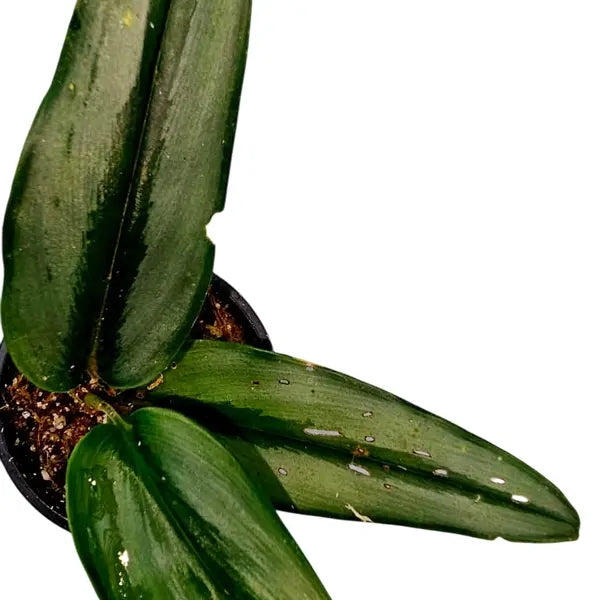
Schapochlamys Sp
Selling Size : Single Plant | Pot Included | Secure Packing | Free Shipping
"Scaphochlamys sp." refers to a genus of plants from the ginger family (Zingiberaceae). These plants are native to the lowland forests of Peninsular Malaysia and Borneo, where they grow as understory herbs, often near streams. Many species are known for their beautiful, ornamental foliage, but their specific care needs make them best suited for a terrarium or vivarium environment.
Here is a general care guide for Scaphochlamys species :
Light:
Semi-shade to full shade. In their natural habitat, these plants grow on the forest floor, receiving very little direct sunlight.
Bright, indirect light is best. Avoid any direct sun, as it will quickly scorch the leaves.
Humidity:
High humidity (70-90%) is essential for these plants to thrive. This is why they are often grown in terrariums or vivariums.
If you are not growing it in a contained environment, you will need a humidifier to maintain the high humidity levels.
Watering:
Lots of water. The soil or substrate should be kept consistently moist.
Their natural habitat is near streams, so they are accustomed to damp conditions.
However, ensure the pot or substrate has good drainage to prevent the roots from sitting in stagnant water, which can lead to rot.
Soil/Substrate:
Use a rich, moisture-retentive, yet well-draining soil mix.
A mix of coco coir, perlite, and a bit of potting soil can work well. Sphagnum moss is also a good option for a terrarium setup.
Some species, like Scaphochlamys kunstleri var. speciosa, are clump-forming rhizomatous plants, and care should be taken not to bury the rhizome too deeply.
Temperature:
These are tropical plants and prefer warm temperatures.
An ideal range is typically 18-26°C (65-79°F).
Propagation:
The most common method of propagation is by rhizome division. You can carefully separate offshoots from the main plant.
Other characteristics:
Many Scaphochlamys species have beautiful foliage that can be plain green or feature intricate patterns and textures.
They are often described as having aromatic leaves.
The flowers are often small, white, or cream-colored, and may be tinged with red or have a yellow center.
Because there are many different Scaphochlamys species, it's always best to try and get a specific name for your plant to research any unique care requirements it may have.

